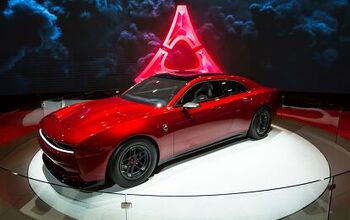Supply Chain Blues
Consumers have a hard enough time keeping all the brands and nameplates in the US market straight; trying to keep track of the myriad suppliers that make up the bulk of the industry is nearly impossible. Even here on TTAC, our well-informed commentariat often throws up its hands at the first sign of supplier coverage. But the fortunes of suppliers to US auto firms have been fading for years now, as Detroit’s misery slides downhill through the various tiers of suppliers. And despite repeated calls for a supplier bailout (and their use as OEM bailout bait), aid has been either misappropriated or rejected. And the bankruptcies show no signs of slowing.
Lear is the latest auto supply giant to belly up to bankruptcy court. The number two global supplier of automotive seating systems will become the eight major supplier to declare bankruptcy since 2005 (and the 20th supplier this year), reports the Wall Street Journal, despite sales of $14.6 billion in 2008. JP Morgan Chase has approved $500 million in debtor-in-possession (DIP) financing for the folding firm (ironically, good news for the financial services sector), reports Bloomberg. Unlike GM and Chrysler’s bankruptcies, Lear expects to pay the “vast majority of trade creditors in full.” GM makes up 23 percent of Lear’s business, and Ford accounts for 19 percent; between the two, Lear has lost over a billion dollars in the last three quarters due to production slowdowns.
Meanwhile, Ford’s spun-off (spun-out?) supplier, Visteon, isn’t benefiting from the private financing revival that is keeping Lear from the TARP trough. As of yesterday’s AP report, Visteon was still seeking financing to emerge from bankruptcy. GM’s own supplier spin-out, Delphi, is facing a similarly terminal bankruptcy. Its judge recently halted its “sweetheart deal” with “guys in suits” Platinum, reports Automotive News [sub]. Even though (gasp) the deal was being sweetened by the taxpayers ( by way of General Motors) who agreed to kick in an extra $2.5 billion. Judges calling out publicly-funded “sweetheart deals“? Who’d have thunk it?
One thing everyone seems to agree on is that suppliers practically belong in bankruptcy. Detroit’s supply chain drama is the dark and dirty side of the business, where the margins are thin and the battles are cutthroat. From the standard retiree benefit slashing (via the Freep), to tooling battles, to strikes, corruption, and worker occupations (via Socialist Alternative for timeliness . . . deal with it). Detroit’s supply chain has seen it all. And with more bankruptcies to come, as noted by a particularly cynical Seeking Alpha post.
The counterpoint to this sad tale is Toyota’s example of supplier relations. In Evolution of Manufacturing Systems at Toyota
, Fujimoto argued that Toyota’s long-term, routinized approach to supplier management was key to its success relative to competitors. Though Detroit has picked up many of Toyota’s bundled outsourcing and “black-box components” tricks , the resulting dependence has been more of the viper-to-chest version of intimacy. If Detroit is ever going to reverse its fortunes, management isn’t the only place where culture change is going to have to take place. Without a long-term commitment and mutual respect there can’t be trust. And you’d better trust the other guys in the life raft.
More by Edward Niedermeyer
Latest Car Reviews
Read moreLatest Product Reviews
Read moreRecent Comments
- SCE to AUX Range only matters if you need more of it - just like towing capacity in trucks.I have a short-range EV and still manage to put 1000 miles/month on it, because the car is perfectly suited to my use case.There is no such thing as one-size-fits all with vehicles.
- Doug brockman There will be many many people living in apartments without dedicated charging facilities in future who will need personal vehicles to get to work and school and for whom mass transit will be an annoying inconvenience
- Jeff Self driving cars are not ready for prime time.
- Lichtronamo Watch as the non-us based automakers shift more production to Mexico in the future.
- 28-Cars-Later " Electrek recently dug around in Tesla’s online parts catalog and found that the windshield costs a whopping $1,900 to replace.To be fair, that’s around what a Mercedes S-Class or Rivian windshield costs, but the Tesla’s glass is unique because of its shape. It’s also worth noting that most insurance plans have glass replacement options that can make the repair a low- or zero-cost issue. "Now I understand why my insurance is so high despite no claims for years and about 7,500 annual miles between three cars.


































Comments
Join the conversation
Thanks for casting some attention on the supply base - it's a dramatically misunderstood part of the business. Basically, there is way too much capacity in the US (and worldwide, for that matter). Even at a 17M SAAR in the US, the supply base was running on nearly non-existent margins. Knock down the production rate by nearly half, and the huge amount of overhead required to run a modern "full-service supplier" creates a huge drain on the finances. If we knock out about half of the supply base (maybe a bit more), then the remaining suppliers have a chance of surviving and producing healthy margins. If not, then much of the base will go under, and then we'll have a rather interesting crisis on our hands.